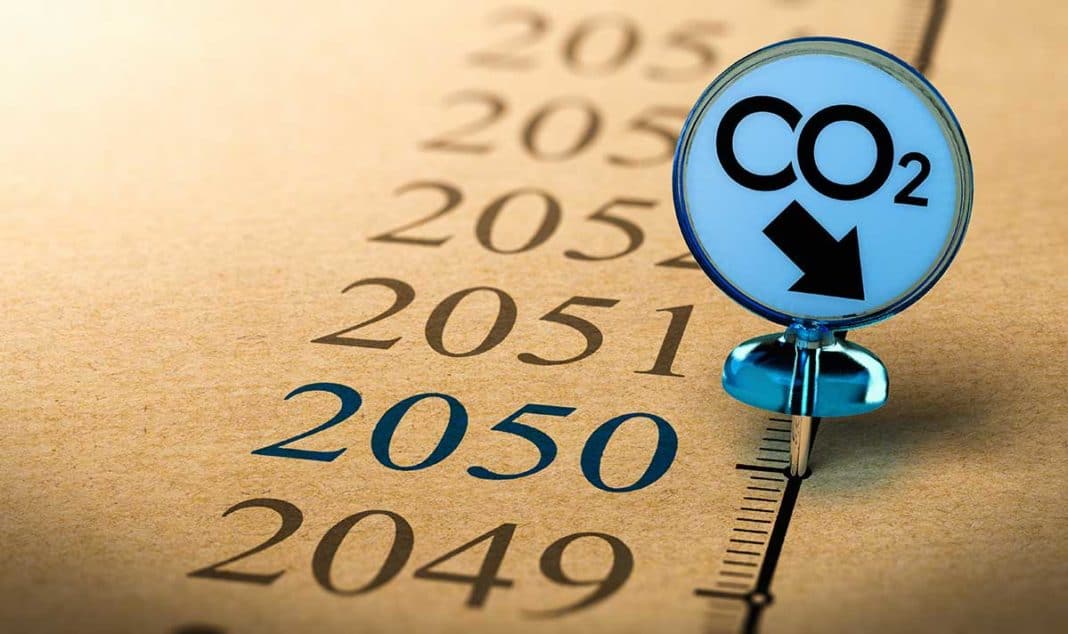OTTAWA – Minister of Natural Resources, Seamus O’Regan, announced the next big step for nuclear technology in Canada with the December 18, 2020 launch of Canada’s Small Modular Reactor (SMR) Action Plan. The announcement capped a week of climate-related announcements that included the federal government’s climate plan to meet and exceed Paris climate targets, a plan to plant two billion trees and a national hydrogen plan as well as a recommitment to the Lower Churchill hydro project in Labrador and to the Atlantic loop, which could see hydro electricity replace the use of coal in Atlantic provinces.
“None of these work alone,” the minister said. “None of them provide all of the answers, but together they get us all the way to meet two overriding goals: to lower our emissions and to create jobs.
“The Action Plan will lay the foundation for the next chapter for success and innovation,” Minister O’Regan said in a presss release. “In 2018, an SMR road map was launched and the momentum has continued to grow. The Action Plan is built on four pillars: advancing SMRs through demonstration; ensuring the right regulations are in place; building capacity and engaging the public, including Indigenous peoples; and opening up new markets. The plan identifies 27 concrete actions we are taking, including investing in innovation and integrating nuclear into other technologies, like hydrogen.”
It will ensure that Canada has a robust policy, regulatory and legislative framework in place to protect people and the environment while continuing meaningful engagement with Indigenous communities and all Canadians and will accelerate innovation and encourage the development of international partnerships and open up new markets, said Minister O’Regan.
“The plan has been built from the ground up with more than 100 partners, including provincial and territorial governments, Indigenous communities, labour, utilities, industry, universities, women in STEM, youth organizations, think tanks and environmental groups.”
Each partner contributed a chapter to the plan that included what they are doing to work together on SMRs as Canada moves forward into its next chapter of safe and peaceful nuclear power, Minister O’Regan said. “That story began 78 years ago when Canada formally introduced itself into the nuclear age with typical Canadian understatement. We were the second country to use nuclear power and the first to declare its nuclear capability would only be used for peace.”
“Canada has one of the safest nuclear regulatory regimes in the world and we will continue to keep our regime strong and safe,” the minister continued. “We are the world’s second largest producer of uranium and nuclear power provides 15 percent of our electricity. In Ontario, it’s over 60 percent and in New Brunswick, 35 percent. Canada’s nuclear power plants also produce 40 percent of the global supply of the medical isotope Cobalt 60, which is used in cancer treatment. Energy is Canada’s family business. We are really good at this.”
SMRs are not an “all in” option, Minister O’Regan noted. “This is the Government of Canada ensuring that we have every tool possible in our toolbox to reach net-zero carbon emissions by 2050 and address the existential crisis of climate change.”
“We don’t have the luxury of choosing any one thing,” he continued. “SMRs are one of a whole host of innovations that can help us get to net-zero emissions by 2050 but they could be a very important part.” He referred to an International Energy Agency report that said achieving global climate goals without nuclear energy could take much longer and cost as much as $1.6 trillion higher. “SMRs are an opportunity worth exploring and Canada is perfectly positioned to lead the way, to set the pace and to reap the benefits.”
The announcement did not include any funding and was never intended to be a funding announcement, said John Gorman, president and CEO with the Canadian Nuclear Association. “It was very important in terms of a demonstration of market demand and federal support for SMRs,” he said.
Consider SMRs as the personal computer to the original mainframe, Mr. Gorman suggested. SMRs are assembled in factories and transported to remote communities to provide heat and electricity or to power mining operations, for example. Because SMRs are scalable and produce very high temperature heat and clean electricity, they are very responsive. The ability to quickly ramp up or ramp down the amount of electricity they produce makes them useful for pairing them with wind and solar. Nuclear is able to back up wind power when the wind stops blowing or solar when the sun isn’t shining, helping create more opportunities for wind and solar and helping ensure that we’re reducing our reliance on fossil fuels,” he said.
One of the most under appreciated things about nuclear, Mr. Gorman said, is that “from a carbon lifecycle perspective, everything from mining uranium down to safely storing and managing the spent fuel that comes out the other end, our entire lifecycle emissions footprint is among the very lowest of any technology. We are four times lower than solar and we’re the same as wind in terms of our lifecycle. It’s a very, very clean electricity source.”
Mr. Gorman spent 20 years in the solar side of the energy sector. The number one argument against nuclear that he has heard “is this idea that if we invest in a future technology like SMRs or hydrogen then what we’re really doing is some form of climate delayism, because what we should be doing is investing everything in technologies that are available right now, which is basically wind and solar. There’s so much wrong thinking about that approach.”
The challenge, he explained, is the enormous amounts of clean electricity we need to produce between now and 2050. “It is the equivalent of having to bring on as much generation as they have in the United States, taking the entire generating suite that they have now and recreating that amount of electricity and adding it every three years from now until 2050. That’s how much clean electricity we’re going to have to bring on if we’re going to use it to help decarbonize and meet our 2050 goals.”
He believes we must invest in currently available technologies including wind, solar and smart grid technologies. “We also have to make sure that we are investing in these technologies that are within arm’s reach right now: hydrogen, carbon capture and storage and SMRs, because we’re going to need those technologies to complement what’s on the table right now.”
There is a concern that SMRs don’t yet exist and aren’t expected to exist for another decade. Despite the astounding adoption of wind and solar power over the past 20 years, we’re still at 36 percent of non-emitting electricity over the world’s electrical grid, said Mr. Gorman. “In Ontario, 90 percent of the coal phase out was done by expanding the amount of nuclear capacity. It is still the single largest carbon reduction initiative in the world and it’s definitely something to be proud of. The IEA (International Energy Agency) says that decarbonizing our electricity system is the building block for decarbonizing all other sectors and in the future we will need two to three times more clean electricity than we do today. We clearly don’t have another 20 years to be decarbonizing our electricity grid.”
If environmentalists hadn’t worked together with the wind and solar industry to ensure that there was investment and policy support over these last 20 years, he added, “we wouldn’t have had them as tools that we need now and that we’re using now and that we have to continue to develop now.”
Investment in technologies like SMRs is needed so that they’re available to us to meet this challenge, he added. SMRs can play a role to ensure that we’re getting other clean technologies all working together to solve the challenge.
There are currently 12 different technologies being reviewed and going through the licencing process in Canada under the Canadian Nuclear Safety Commission (CNSC), Canada’s nuclear regulator. Some of these are in very late stages and, in fact, Ontario Power Generation announced in November that it’s going to connect it’s first SMR in 2028. The Canadian Nuclear Association thinks that smaller SMRS than OPGs are going to be available even by 2026.
Some of the technologies under review are Canadian and some are from the United States or the United Kingdom. “They’ve come here because they’ve recognized that Canada is going to be one of the first movers in terms of deploying these so they’re going through our process,” said Mr. Gorman. He believes that ultimately there will be a combination of Canadian technologies and American and British technologies that are approved here. “Building up the expertise to be able to build them and deploy them is what’s going to be really important here if we’re going to compete globally for all of that business.”
This is a competitive world and a competitive process and there are going to be technologies that outstrip the others in terms of speed of deployment and other things, he said. “Because the SMRs are useful for different purposes, we’re going to need a small number of different technologies for different applications to fulfill those different needs. For example, Ontario Power Generation has already shortlisted two or three technologies for the reactor it’s deploying in 2028. I think we will see over the coming years that there are some technologies that are going to emerge here in Canada and globally which are going to be more prominent right away.”
The most significant thing about the action plan for Mr. Gorman is the testimony by over 100 different partners, from Indigenous communities to industrial groups to utilities, that have all submitted a chapter on why it is they want to have SMRs deployed in their particular situation and committing to things they are going to do to help make that a reality. “I think the significance of that is it shows what the market demand is here in Canada and it shows what the support level is here in Canada,” he said. The SMR Action Plan reports the demand for SMRs in Canada is equal to about $5.3 billion dollars in 2030. “The reason that the market demand is so important is because the promise of SMRs is that if you have the market demand and you produce multiple units of a particular SMR, it brings the costs way down. We think the smaller ones can already be financed by the private sector which is important but to make them really cost-effective means that we want to be able to produce multiple units of them.”
“Nuclear is not a silver bullet,” Mr. Gorman concluded. “The challenge we have is so great that we’re going to need every technology we have today and any technology we have within arm’s reach whether that’s hydrogen or carbon capture or SMRs, and the nuclear industry is ready.”





